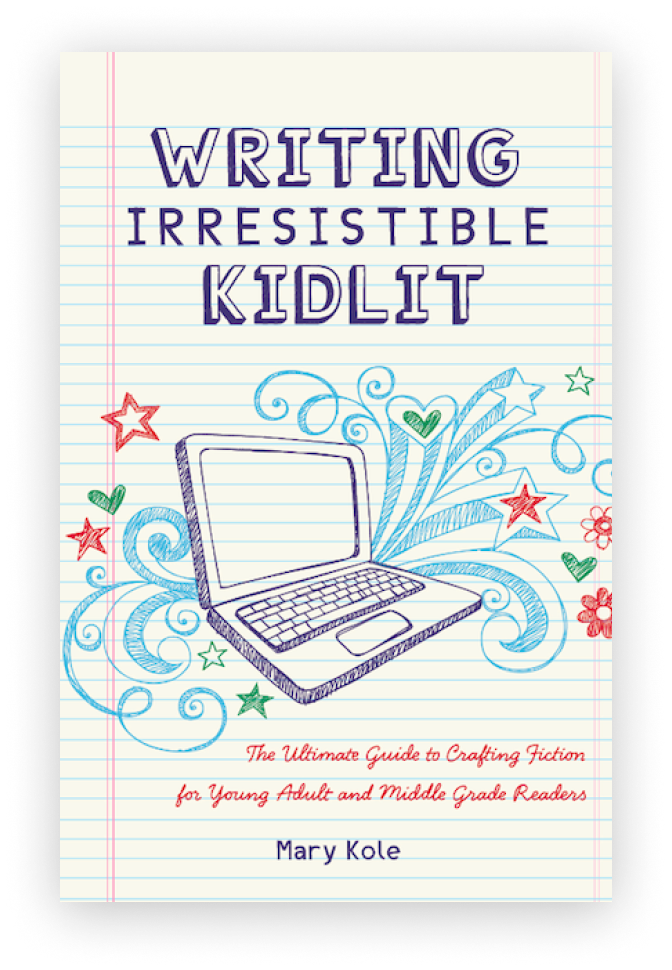Writing for Kid Readers
By Mary Kole
Mary Kole is a former literary agent, freelance editor, writing teacher, author of Writing Irresistible Kidlit, and IP developer for major publishers, with over a decade in the publishing industry.
Are you an aspiring writer looking to write children’s books and captivate the imaginations of kid readers? Writing for children is a unique calling and challenge that requires different approaches to storytelling and a deep understanding of the needs and wants of this target audience. From the kind of story elements that appeals to them to universal themes and character types that speak to kid readers’ hearts, crafting an engaging children's book requires skill and expertise. In this article, I’ll dive into all the details of writing fiction for kid readers to help you bring your stories to life and keep your young audience hooked from start to finish.
Story Elements that Appeal to Kid Readers
Kid readers crave stories that take them on an adventure, ignite their imaginations, and inspire them to believe in magic and fantasy. They want to see relatable characters who are proactive, brave, and determined to overcome obstacles. The plot should include twists and turns, excitement, and a sense of wonder that transports them to a new world. Furthermore, a good children's book should have a message that resonates with them and encourages them to achieve their objectives.
Types of Publishing Categories that Serve Kid Readers
If you're aiming to write a book for kid readers, you need to understand the different publishing categories available. In the publishing industry, we don’t say “children’s books,” since there are at least six main types that serve different kid reader age ranges. These include board books for the youngest kid readers, picture books that feature text and illustrations, very regimented early readers with a story and illustrations, chapter books for ages seven to nine that tell a more complex story with fewer illustrations, middle grade novels for ages nine to twelve that are longer and more complex in terms of themes, character development, plot lines, and writing style, and young adult novels for ages thirteen and up that involve multilayered narratives and can explore more serious content. Each category has its unique requirements, so understanding your specific target readership of kid readers is important.
Universal Themes and Character Types that Appeal to Kid Readers
Kid readers often respond to books with themes that are relatable to their lives and experiences. These can include themes such as friendship, family, overcoming obstacles, self-discovery, individuation, and adventure. Additionally, they will likely be most attracted to characters that have strengths, weaknesses, flaws, and personalities that kid readers can identify with. Characters that show perseverance, kindness, and bravery in the face of adversity are especially poignant, and you will ideally include story obstacles that are age appropriate for each category of reader.
Kid readers are intelligent, and they can often understand more complex concepts than many adults give them credit for. It's essential to avoid talking down to them by keeping the language simple and clear but not oversimplifying the story. Avoid clichés, stereotypes, and moralizing, and keep the plot engaging and exciting. Speak to your young readers as equals, and not as an adult talking down to a child.
Knowing Your Audience and Genre Expectations
Writing for kid readers involves understanding your audience and the genre expectations that come with the type of story you're telling. For example, a sci-fi or fantasy novel may require world-building and more detailed explanations, while a mystery or adventure story may need clues, twists, and excitement. Knowing what your readers are looking for and what your genre entails will help you create a more satisfying story.
Writing fiction for kid readers is a unique craft that requires a deep understanding of your target audience and the storytelling elements that excite and inspire them. From crafting a thrilling plot to creating relatable characters and themes, writing for kid readers involves a delicate balance of skill and imagination. As you embark on your writing journey, remember to stay true to your writing voice, your premise, and your story idea. With these guidelines and a willingness to experiment and learn, you can write fiction for kid readers that stands the test of time and captures the hearts of generations to come.

Click here to purchase Writing Irresistible Kidlit, my book on fiction craft for MG and YA novels, out from Writer's Digest Books. This will show you my writing craft philosophy and give you lots of valuable advice, including tips for the novel revision process and self-editing. There are over 35 example novels cited and discussed throughout. It’s a valuable resource for any writer’s toolkit.



